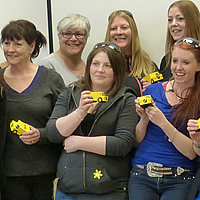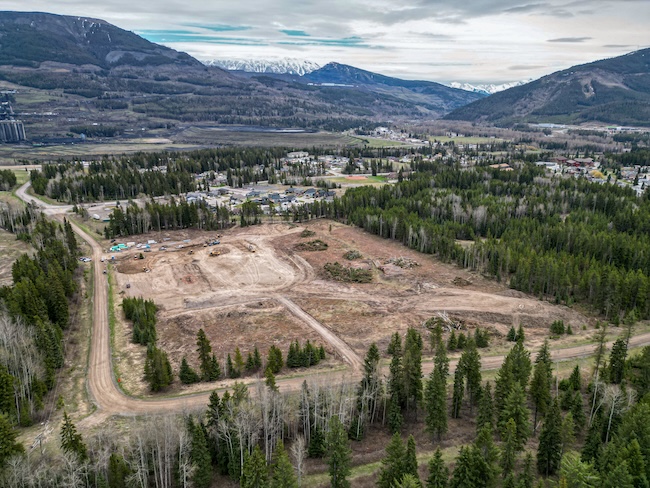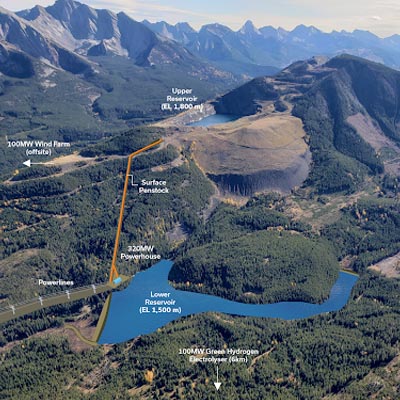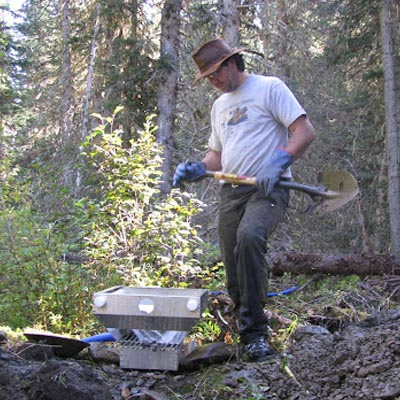A career exploration for women in mining

1 of 2A celebration for the 15 graduates of the College of the Rockies Women in Mining program took place on April 11, 2014, at the campus in Fernie,
1 of 2A celebration for the 15 graduates of the College of the Rockies Women in Mining program took place on April 11, 2014, at the campus in Fernie, B.C. — Kirsten Armleder photo
Jobs in Canada’s mining industry are not limited to men. Women can also take advantage of the many career opportunities that are available now and in the future.
That was the key message the College of the Rockies (COTR) wanted students of its Women in Mining course to take home with them, and according to Anita Palmer, manager of COTR's campus in Fernie, B.C., it was successful in doing so.
The course, which was held at COTR’s Fernie campus, introduced women to the types of careers they can pursue in the mining sector, and it covered a wide range of topics—including fundamentals and procedures in surface mining; computer skills; Occupational First Aid Level 1; Workplace Hazardous Materials Information System (WHMIS); health, safety and reclamation code for mines; fall protection; and haul truck simulator. Topics such as goal setting, workplace communication and resumé writing were also discussed.
A highlight for many was the mine tour and ride-along with a veteran haul truck operator that was offered by Teck. It took place at Teck’s Elkview Operations in nearby Sparwood. Teck also supported the Women in Mining course by supplying speakers for presentations on industry expectations and balancing family and career.
This was COTR’s first ever Women in Mining course. According to Palmer, it came about when the college realized that women, even those living right in the Elk Valley—the heart of coal-mining country—were not aware of the jobs available to them.
The course was completed on April 11, 2014, and a celebration at the Fernie campus took place the same day. Of the 15 students who graduated, many were from the Elk Valley and nearby Crowsnest Pass in Alberta. Others came from the B.C. communities of Cranbrook, Kimberley and Creston. One student even drove 15 hours from Vancouver Island to take the course. She was pleased with the course and said it was inspiring to know that women are stepping into what is typically perceived as a male-dominated industry.
Palmer said the course achieved its goal.
“The ladies were thrilled,” she said. “I think they felt it did open ideas for them so they know they can pretty much do whatever it is that they want to do. That’s what it was meant to do and I think we were hugely successful.”
The details have yet to be solidified, but COTR is looking at holding another Women in Mining course in fall 2014. In the meantime, Palmer said, anyone who is interested can contact the Fernie campus at 1.866.423.4691.
What demand is there for women in mining?
Mining continues to be one of B.C.’s strongest and most important industries, but with an aging workforce, the industry is faced with a serious worker shortage. According to a report published in August 2012 by the Mining Industry Human Resources Council and the BC HR Taskforce, annual mining hiring needs from now until 2022 in B.C. range from 1,500 to 2,000 workers.
Although participation of women in B.C.’s mining industry has increased, they still only make up about 16 per cent of the current workforce. Groups such as Women in Mining BC and the BC HR Taskforce are working to promote growth and diversity by encouraging more women to pursue a career in mining. They’re also reaching out to large companies, like Teck, helping them look for ways to attract and retain more women workers.
For more info on B.C.’s mining industry and careers, see the following:
- BC HR Task Force
- Women in Mining BC
- Mining Association of British Columbia
- Mining Industry Human Resources Council
Mining continues to be one of B.C.’s strongest and most important industries, but with an aging workforce, the industry is faced with a serious worker shortage. According to a report published in August 2012 by the Mining Industry Human Resources Council and the BC HR Taskforce, annual mining hiring needs from now until 2022 in B.C. range from 1,500 to 2,000 workers.
Although participation of women in B.C.’s mining industry has increased, they still only make up about 16 per cent of the current workforce. Groups such as Women in Mining BC and the BC HR Taskforce are working to promote growth and diversity by encouraging more women to pursue a career in mining. They’re also reaching out to large companies, like Teck, helping them look for ways to attract and retain more women workers.
For more info on B.C.’s mining industry and careers, see the following:




